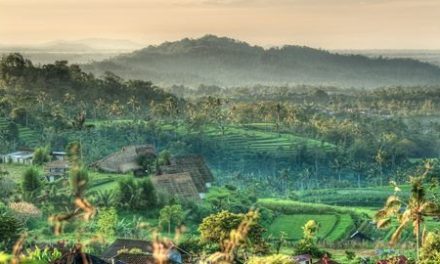Nestled on the southwestern coast of Bali, Tanah Lot is not just a stunning sea temple but a vibrant epicenter of culture, spirituality, and community life. As someone who has wandered its rocky shores, captivated by the interplay of sea, sky, and sacred space, I can attest that Tanah Lot carries immense ethnographic significance for researchers. This article dives into what makes Tanah Lot a treasure trove of cultural insights, peppered with personal anecdotes and practical advice for aspiring ethnographers.
The Enigmatic Charm of Tanah Lot
Walking toward Tanah Lot, the salty breeze tousles your hair, and the rhythmic crashing of waves creates an almost meditative atmosphere. I was first drawn to this majestic site while backpacking in Bali. The sounds, sights, and scents enveloped me, offering a glimpse into both a physical space and a cultural heart. This tangible immersion activates the senses, setting the perfect stage for ethnographic exploration.
The Cultural Tapestry
Tanah Lot is not merely a tourist destination; it is a microcosm of Balinese culture, woven together by religion, tradition, and community. The temple itself, dedicated to the sea god Baruna, holds profound significance for the Balinese people, who believe that the rocks surrounding it are protectors against sea spirits. Researchers can observe rituals, like offerings made by local Hindu families, which occur daily, celebrating life, death, and everything in between.
In one of my visits, I observed a local family preparing offerings before dawn. It was a serene scene: the flickering candlelight reflecting off faces that wore devotion as easily as the batik sarongs draped around them. Engaging with them, I learned about the intricate meaning behind each item they placed on their offering tray, from flowers representing purity to rice symbolizing prosperity.
Spiritual Practices as Research Subjects
The routine spiritual practices in Tanah Lot offer a fertile ground for ethnographers. It’s a living laboratory where tradition meets the contemporary individual. Observing the local ceremonies, researchers can document how ancient beliefs manifest in modern life.
For instance, on one occasion, I watched a group of men conduct a ceremony while a nearby wedding took place. The juxtaposition of the sacred and the celebratory was striking. The locals seamlessly transitioned from sacred chants to shared laughter, showcasing the integration of spiritual life within daily celebrations. This dual existence opens up avenues for researchers to explore themes of syncretism and cultural adaptability.
Engaging with Local Communities
Building genuine connections with the local community is essential for any ethnographic work. While some researchers may hesitate, fear of imposing or being perceived as outsiders, my experience has taught me that kindness and respect often bridge these gaps.
I remember introducing myself to Warung Ibu, a local eatery owner right next to Tanah Lot. She welcomed me with a smile and a plate of Nasi Campur that was bursting with flavors unique to the island. Over our meal, we discussed how she adapted her family recipes to cater to the influx of tourists while still preserving her cultural identity. Conversations like these fuel ethnographic narratives and provide deep insights into cultural resilience.
Practical Tips for Researchers
Now, as I reflect on my adventures, here are some practical tips for anyone venturing into ethnographic research at Tanah Lot:
1. Be Present: Leave your research notes behind during the initial visits. Immerse yourself in the atmosphere, and let your thoughts flow. Take mental notes and observe the nuances of interactions.
2. Attend Local Festivals: Try to align your research visits with local festivals when the temple is most alive with activity. This is when you’ll see culture vibrantly displayed, and locals are often eager to share their traditions.
3. Learn Basic Bahasa Indonesia: Even a few phrases go a long way. Engaging locals in their language builds rapport and opens doors to deeper conversations.
4. Utilize Multimedia: Ethnographic work is not just about writing. Utilize photography, video, or even audio recordings to capture ceremonies and stories. These can be invaluable in your documentation and analysis.
5. Stay Open-Minded: The research process is inherently fluid. Your original assumptions may be challenged as you delve deeper into your study. Embrace the unexpected insights; that’s where the real magic happens.
Conclusion
The ethno-cultural landscape of Tanah Lot deserves the attention of researchers from various disciplines. Its rich tapestry of spirituality, community, and tradition provides fertile ground for exploring how culture shapes and is shaped by natural environments.As I left Tanah Lot one sun-drenched afternoon, I reflected on the connections I had made, the stories I had gathered, and the vibrant essence of Bali that felt like a part of me now. I encourage fellow researchers to take the leap and engage with this extraordinary site. You just might uncover layers of meaning that resonate beyond academic study, enriching your understanding of culture and humanity itself. Whether you’re writing a paper, preparing a presentation, or simply curious about cultural practices, Tanah Lot holds lessons waiting to be uncovered. So pack your bags, grab your journal, and let Tanah Lot inspire your ethnographic journey.






